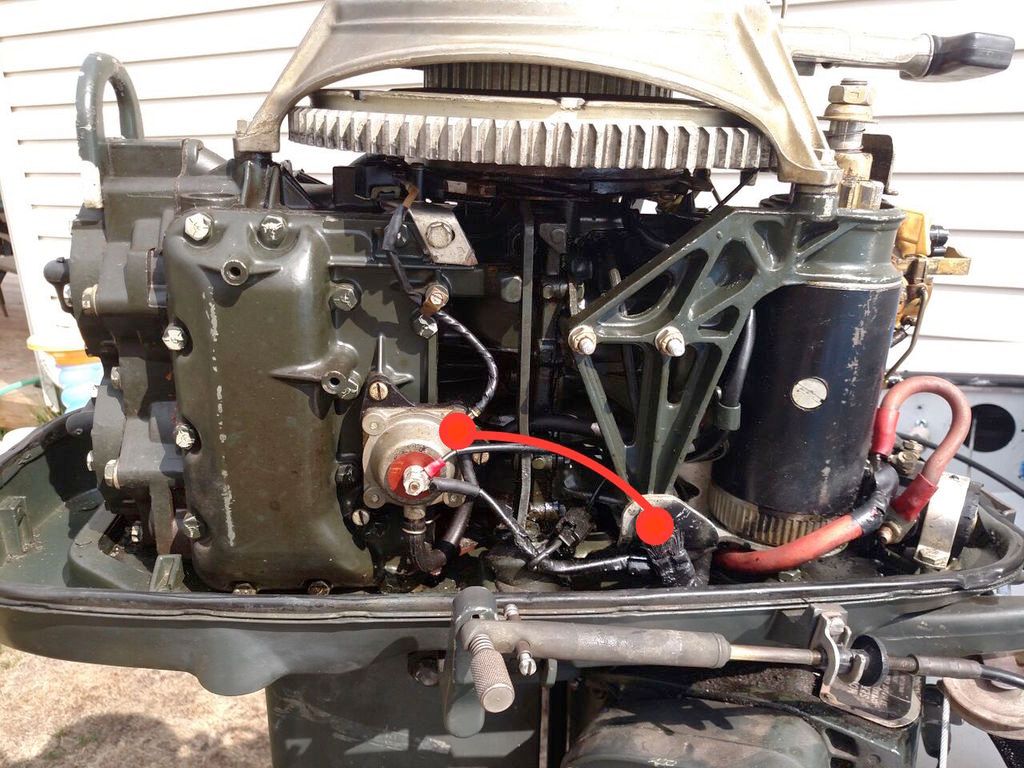Notes. Make lots of notes. Think you have it right on solenoid grounding issues. Trick is to remember it five years from now when there is another project. Know what you mean about prior mysteries -- Did a couple of smaller motors this spring, and had to figure out PO rewiring on one, taking it back to original. But my shop time is cheap....
Yes, notes, and saving images in my mind for anything else... I went through 10 sets of setups, tested every single cable on the motor. It does seem like the grounding is an issue so I cleaned every point that is attached or screwed into the base for grounding. I've added the extra black wire from ground to that middle setting, based on wiring.
Then, after all test I had it working one way bypassing the console wires ... so basically running two wires from the top of the small terminals on the solenoid to the ignition. One wire I grounded on the motor and one attached to the "S" start on the ignition switch. BANG! it works... alright. So maybe its the white wires why its not firing up.
So, cleaned both ends of both of the white wires for the solenoids, cleaned the plug connectors that are within the motor (THE BIG PLUG) with some sand paper I put in there and twisted. Still nothing.
One thing did come to mind; since I've been tugging the wires for the ignition while hooking stuff up like the lights, ignition switch etc.. maybe, possibly, maybe that one white wire, the ignition start wire got lose some how in my connections... maybe the connector let lose or something, maybe not enough grip or compressed enough. It's possible I was doing this in like 100F outside and got tired, so maybe. Worth a check but will un-tape the first part to reveal all wires and tug see if anything is lose.
That's exactly what I did, untaped, revealed white, brown, red and purple with stripe wire.. and then gave each one a light tug.. BANG! white wire just slid right out without much of anything. I was right, my connector didn't grab it hard enough and let the wire lose which wasn't making the connection. Connected that with one of those quick connectors, re-did all of them since the connectors actually cut into the wire rather then hold them and taped them again properly.
Test time... so hooked everything back the way it was, screwed every bit of whatever back on the motor, put the cover up... connected the battery wires, connected the wires to the ignition and ..... WOOHOOO!! it started like a champ! no hesitation or nothing.
Great, so tomorrow I'll have to go through all other wiring see why my horn, pump works but my lights don't. Probably these cheap butt connectors don't hold a thing.






















